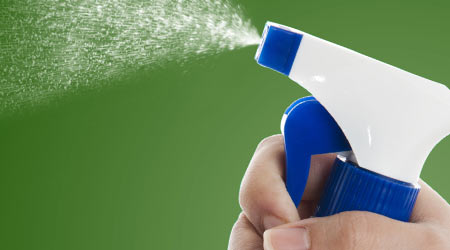
A reader writes: “I still do not understand why I have to use an disinfectant if I am using a good all purpose cleaner or why I can’t use both for a better job. Please explain.”
First of all, the “disinfectant” you are using is a sanitizer and not a true disinfectant, since it does not have an EPA registration number on the label. Although it may be a great product, you should be careful about using the wrong term for the intended outcome. It is not effective in cleaning and you still need an all-purpose cleaner to remove the soils first.
I like to refer to four levels of cleaning:
1) Cleaning, which may mean simply wiping a surface with no real goal of disinfecting
2) Sanitizing, which in my definition means 50-99 percent kill rate of ALL microorganisms on a surface
3) Disinfecting, which with specified dwell time is supposed to kill 99.99999999 percent of all microorganisms on a surface
4) Sterilization which is 100 percent kill rate and requires some sort of autoclave (think intense heat) that kills everything but is not practical for an office setting.
These four terms are oftentimes misused with customers demanding all areas be “sterilized,” which means they want an aseptic level of cleaning. Does it matter if the floors are “sterile” (except in possibly an operating room where everyone is wearing booties and gowns anyways) or should it be free of soils and safe to walk on? Can carpet (a sinkhole for germs, dust mites, dander, etc.) stay disinfected for long if in regular use?
The key is to get the customer to understand the importance of identifying key touch points that truly need to be disinfected on a regular basis. This means trained staff use the correct chemicals safely to achieve the desired results.
Your comments and questions are important. I hope to hear from you soon. Until then, keep it clean...
Mickey Crowe has been involved in the industry for over 35 years. He is a trainer, speaker and consultant. You can reach Mickey at 678-314-2171 or CTCG50@comcast.net
posted on 8/19/2016

 Celebrating BSCAI's 60th Anniversary eBook
Celebrating BSCAI's 60th Anniversary eBook The Down and Dirty on Cleaning in Virus Season
The Down and Dirty on Cleaning in Virus Season How Surfactant Use is Expanding in Commercial Cleaning
How Surfactant Use is Expanding in Commercial Cleaning